Make infused oil by filling a clean jar with dried herbs up to roughly 2/3 then pour your oil into it until it covers completely the herbs. Try to leave 1 cm of oil above the herbs. Place your jar near a window, with light but away from direct sunlight. Leave the herbs to infuse the oil for 3 to 6 weeks, shaking the jar once every day.
That’s basically it. Learn how to make infused oil with dried herbs and how can you use them in this post.
Table of Contents
What Are Infused Oils
Infusion is a chemical process that uses botanicals (typically dried herbs, flowers or berries) that are volatile and release their active ingredients readily in water, oil, or alcohol. In this process, a liquid is typically boiled (or brought to another appropriate temperature) and poured over the herb.
After the herb steeps in the liquid for an appropriate period of time, it is removed (possibly by straining) leaving an infusion.
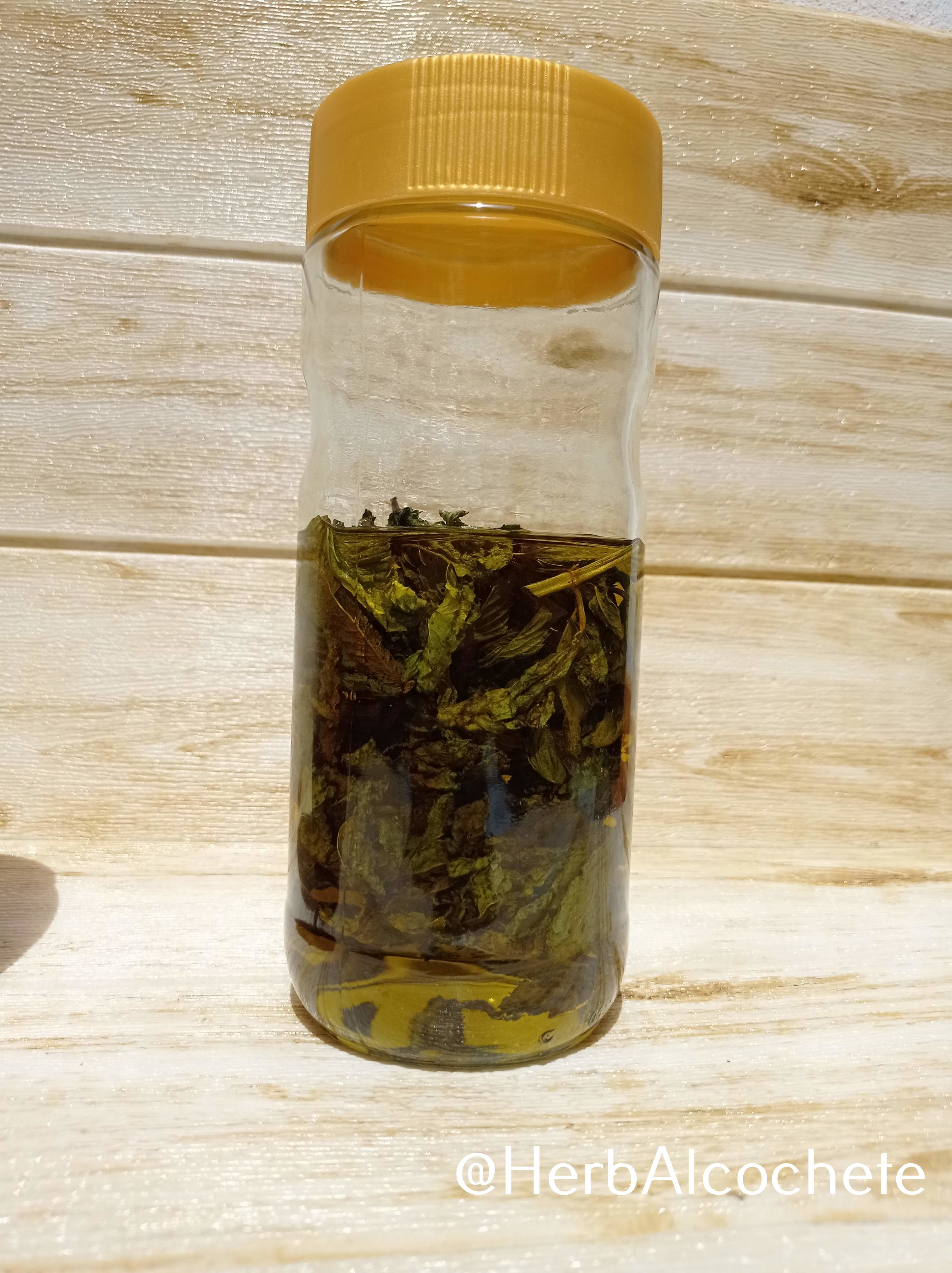
The amount of time the herbs remain the liquid depends on the kind of infusion. Infusion times can range from seconds (for some kinds of Chinese tea) to hours, days, or months (for liqueurs like Sloe Gin).
An oil Infusion means that you use a carrier oil to infuse with herbs. Oil soluble plant ingredients are the ones that are going to pass to the carrier oil. This means that you need to choose the appropriate herbs to use on your infused oil, to take the most advantage of this ingredient. These are some of the most common plants that work well in infused oils but you can use others:

- Calendula (flower)
- Chamomile (flower)
- Rosemary (leaf)
- Lavender (flowers)
- Lemon balm (leaf)
- Plantain (leaf)
- Comfrey (leaf)
- Yarrow (leaf)
Infused Oils In Skincare
Herbal oils are very versatile ingredients. They can be used to create marinades, massage oils, salves, lip balms, facial serums, hair treatments, body creams, soaps, and more!
You can use many different carrier oils. However, fractionated coconut oil or olive oil are popular and wise choices. They have long shelf lives and are suitable for many applications. Also, sunflower and sweet almond oils are very popular, just be more careful with shelf-life and use anti-oxidants.
There are several ways to infuse oils, but the best known is the “folk” or “simplers” method. This method relies on the sun to naturally infuse oil with herbal properties.
Infused Oils vs Essential Oils
Have in mind that infused oils are not the same as essential oils.
Essential oils are produced by distilling or cold-pressing plant material, or by using solvents. They are fragrant, therapeutical, highly concentrated plant essences and too strong to use directly on skin. There are (most of the times) no carrier oils in its constitution, just the volatile oils present in plant material.
An infused oil is different: the plant material is soaked into a carrier oil (like in a tea) and some of its properties are passed onto the oil. They are much less fragrant, and less potent as well, but much cheaper and accessible to make. Unlike essential oils, you can use them directly on your skin undiluted.
Infused oils are base ingredients for many cosmetics, while essential oils are there to provide fragrance and stronger plant medicinal properties (but are optional).
Most of the times you use both.
Using Dried Herbs
To infuse oils, with rare exceptions, it’s safer to use dried herbs, as it will prevent your infused oil to go rancid, or spoil (with bacteria, microbes, fungus, etc.).
You can also use fresh herbs, but be aware. Always add some anti-oxidant to the oil (vitamin E or grapeseed fruit extract), and if it smells or looks bad, throw it away.
See How To Dry Herbs at Home to know how to make your own dried herbs from your garden plants.
If you prefer, you can buy online already dried herbs.
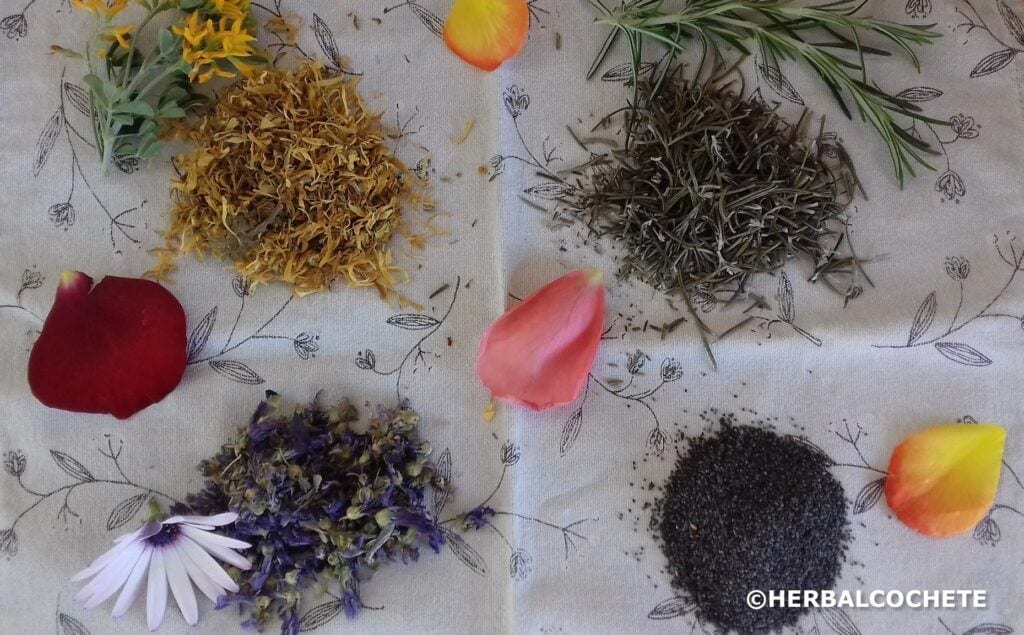
Be Careful With Rancidity
You are preparing a wonderful product: a natural oil with skin healing properties. The last thing you want is to find out it’s spoiled or rancid… Take these tips into account to prevent it:
- When preparing skin care products, whatever their goal, always use fresh oils, those are the ones that give you the best quality products. They will also have a lower probability of spoiling while infusing herbs.
- Always use some drops of an anti-oxidant: vitamin E, grapeseed fruit extract, rosemary oleo-resin extract, as it is an extra help to keep the oil from going rancid. It is not mandatory when using dried herbs and fresh oil, but it helps to not have surprises. It is mandatory when using fresh herbs.
Where Can You Use Infused Oils
- How To Make Natural Lip Balm
- How To Make Healing Salve
- Lotions – any of the oils in lotion or cream recipes may be an infused oil
Different Ways to Make Infused Oil
There are a couple of ways to make infused oil, besides the one presented in this article. The most common is the “cold infusion method” or “folk method”, where you soak your herbs in oil and leave it inside a jar for 2 to 6 weeks in the outdoors or near a window. The other methods involve using heat or alcohol to speed up the process. I’ve also read that leaving it exposed to sunlight makes the infused oil more potent.
From my experience with oil infusions I’ve tried:
- The heat infusion method, I believe it worked as my first healing salve was indeed regenerating
- The cold infusion method but without placing the jar outdoors. This was how I’ve made the healing salve I currently use and, again, it is noticeable how it helps healing burns, rashes and wounds
I usually use the later one because it’s convenient for me, as I prepare the infusion and leave it at it to do its work.
Still, if you don’t want to bother to plan or wait for your oil to be ready, you can use the heat infusion method or even a mix of both. The main trick of using the heat infusion method is to NOT heat the oil too much – above 60ºC -, by using a crock pot. The oil needs to be kept at a constant temperature for several hours (6 to 12 hours).
Please, find in the following links detailed description of the three methods, how and when to use them, that I do recommend to read as a complement to this article:
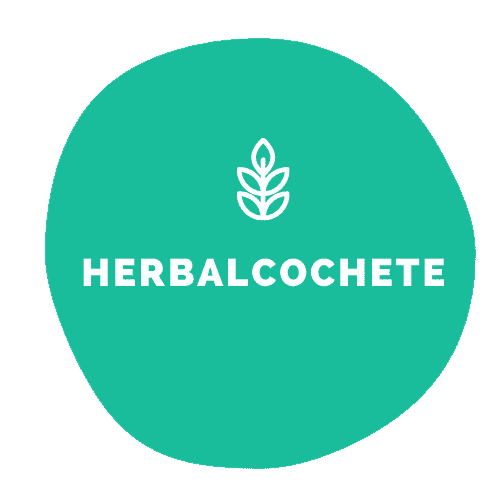
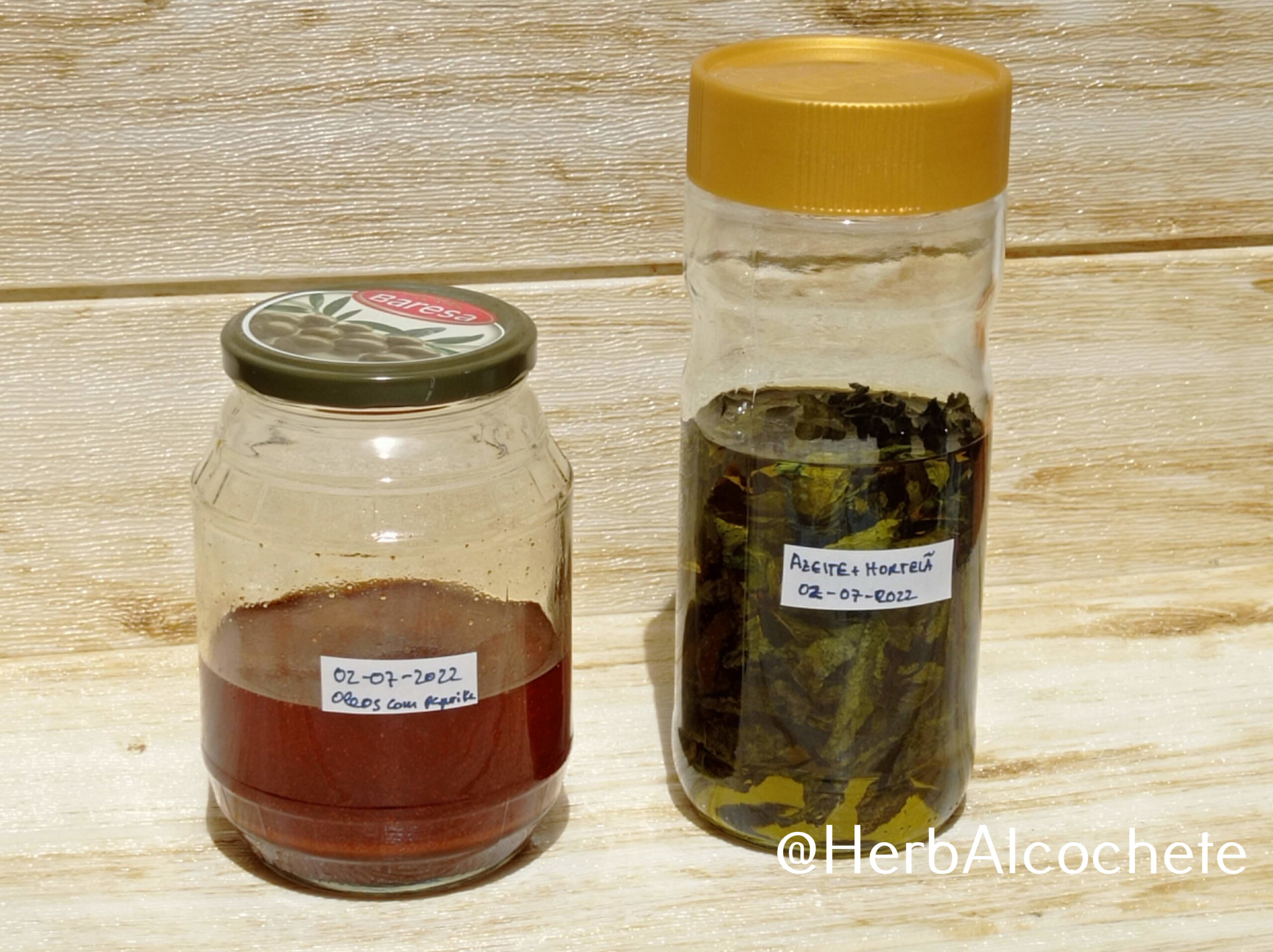
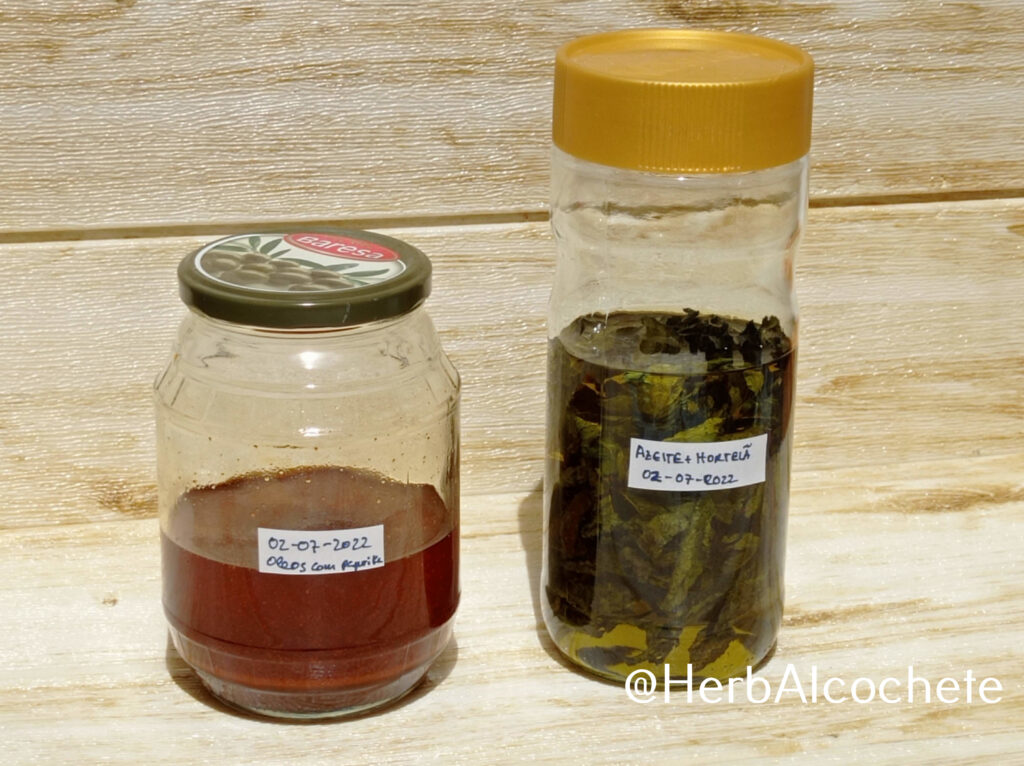
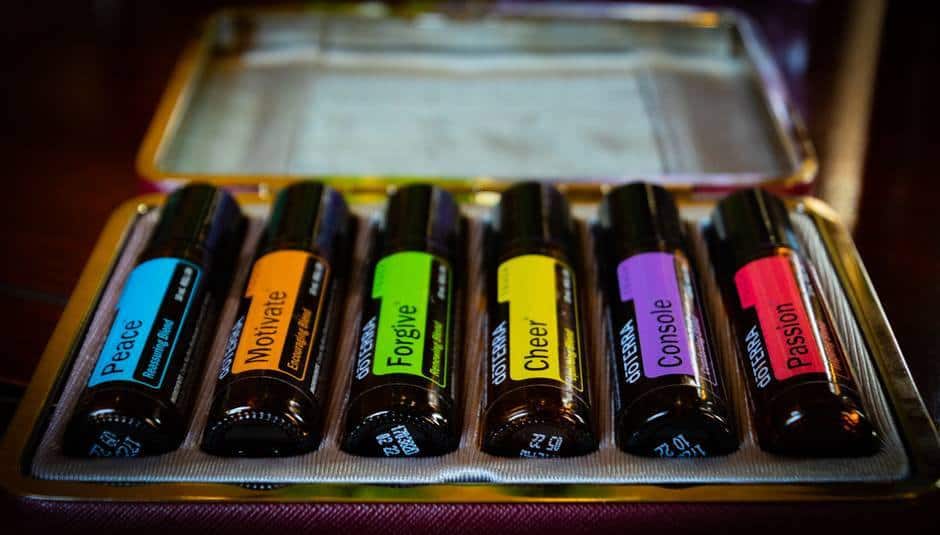

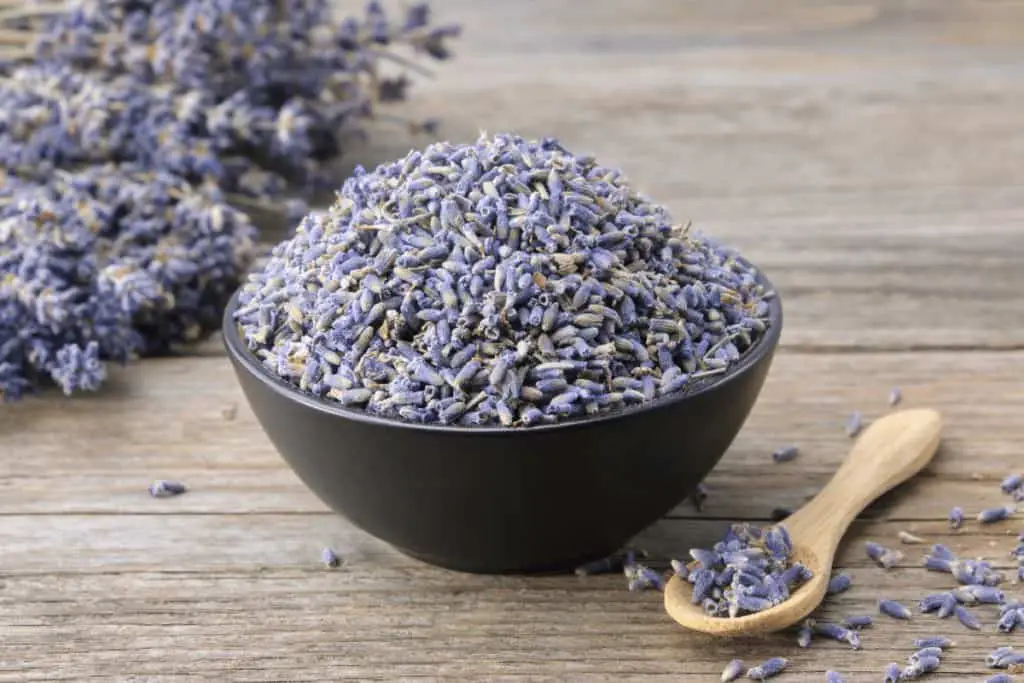

I can’t stress enough how much health means to me, every-time I read useful content like this I’m always joyful. I’ve certainly learn a lot about infuse oil, how to make, it comparison against others, even the herbs, I’m a very big fan of that. You also mention about the “Rancidity”, I think it was very important to mention that, when coming to preparing skin care products you definitely need to be care. Thanks for sharing
Hello earlofpearl and thanks for your comment.
I am glad you are sensible to the subject of health and well being. My website is all about giving opportunity to everyone to make more informed choices about skin products. Infused oil is a very versatile product, and can be used in most cosmetics or even on its own. Give it a try and let me know how was your experience.
Cheers,
Sofia
There is alot of ways to make infused oil, The most common is the “cold infusion method” i realy like the method of cold infusion ,its easy and fast ,”, where you soak your herbs in oil and leave it inside a jar for 2 to 6 weeks in the outdoors or near a window. The other methods involve using heat or alcohol to speed up the process. exposed to sunlight makes the infused oil more potent.
Hello Serina and thanks for your comment.
My only attempt at trying to infuse oil with sunlight, the oil got rancid… It could be because it was sweet almond oil that gets rancid quite easily (and no vitamin E…). I’ve also read that UV rays destroy some of the properties of oil/plants, so not sure if it should be exposed to sunlight. What is your experience with it? I end up making infused oil indoors.
Cheers,
Sofia